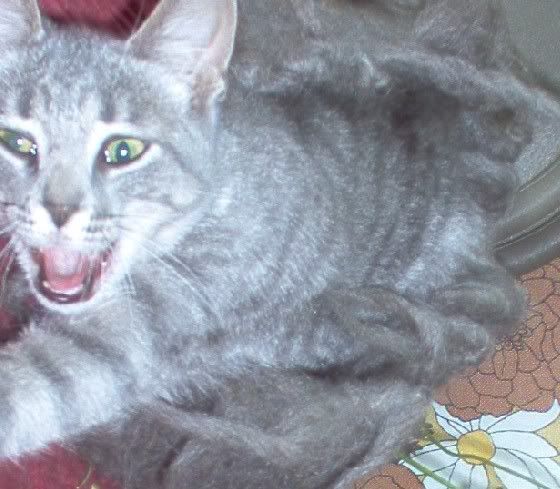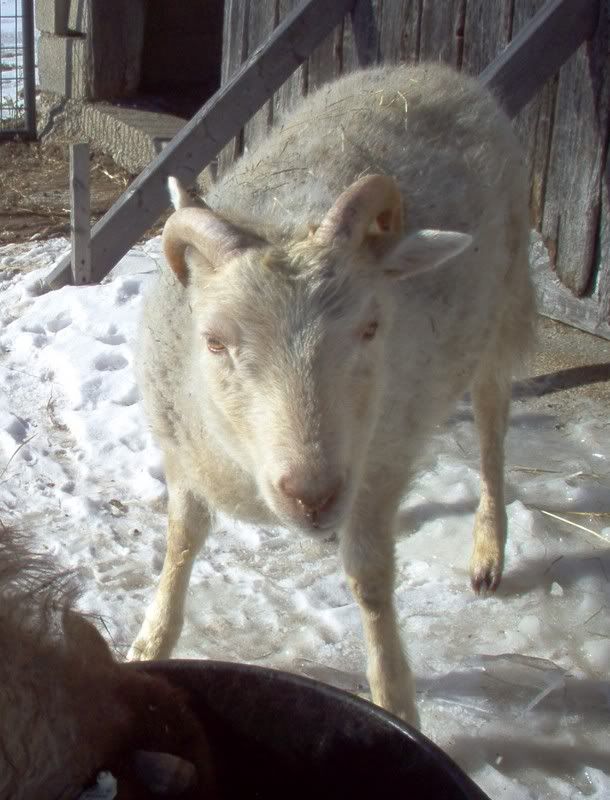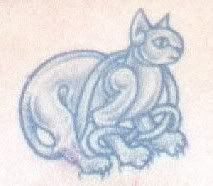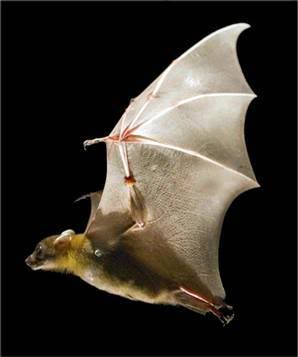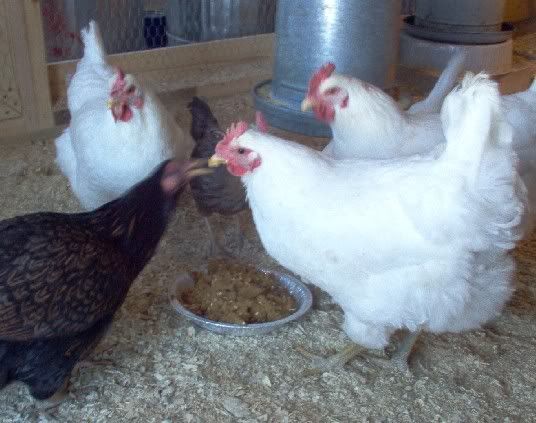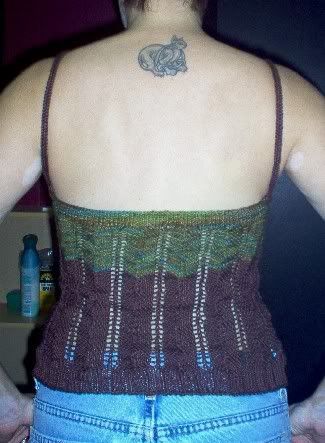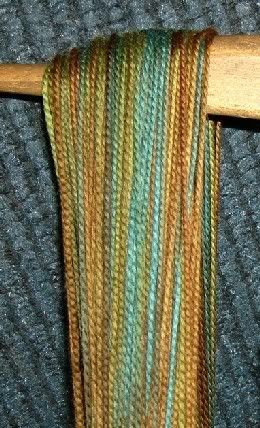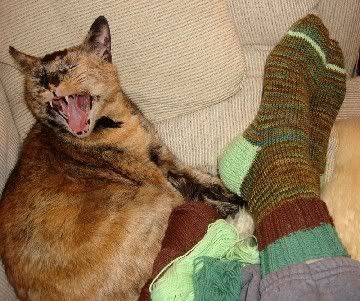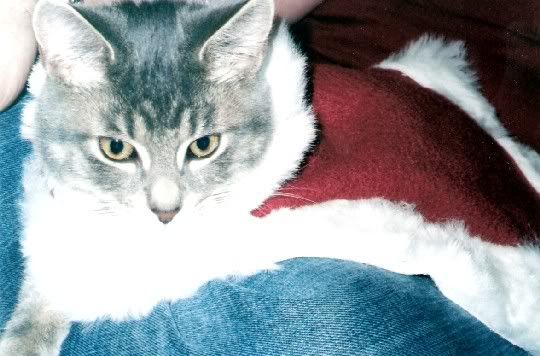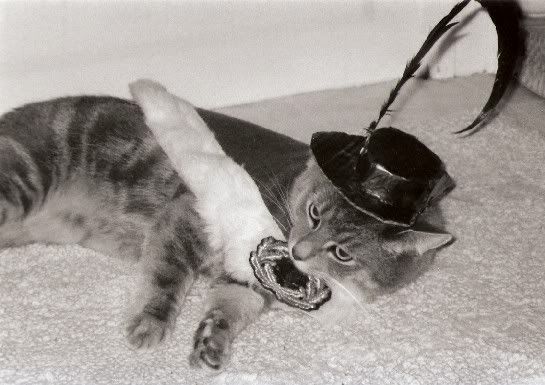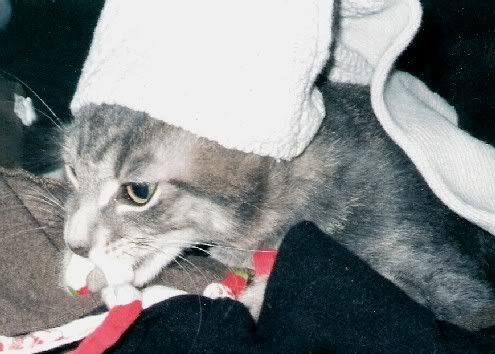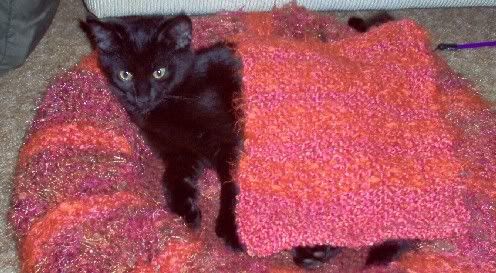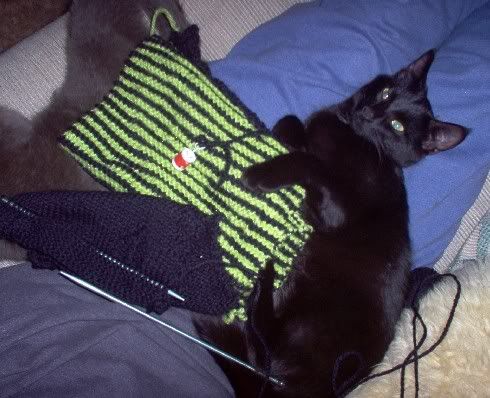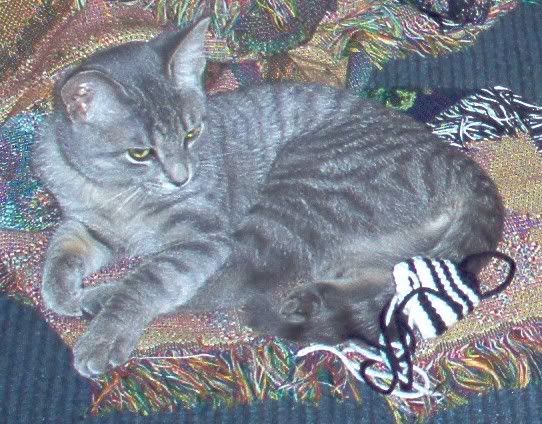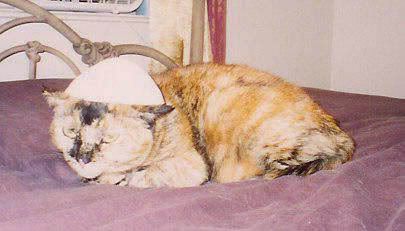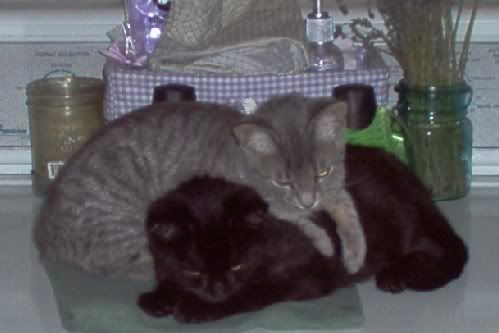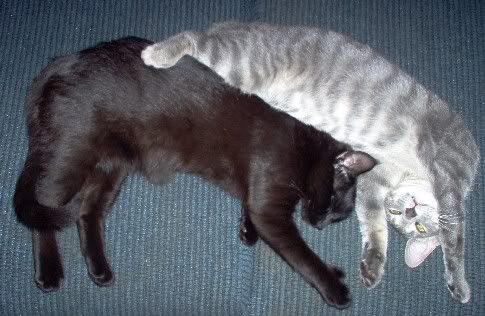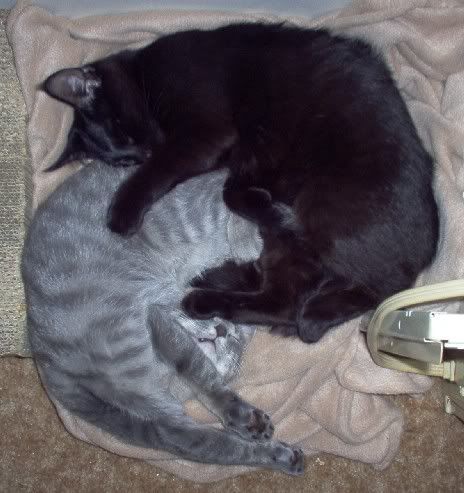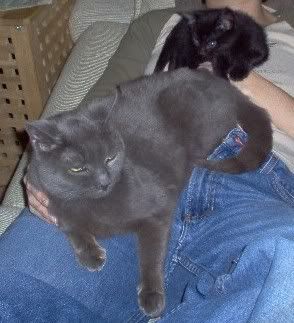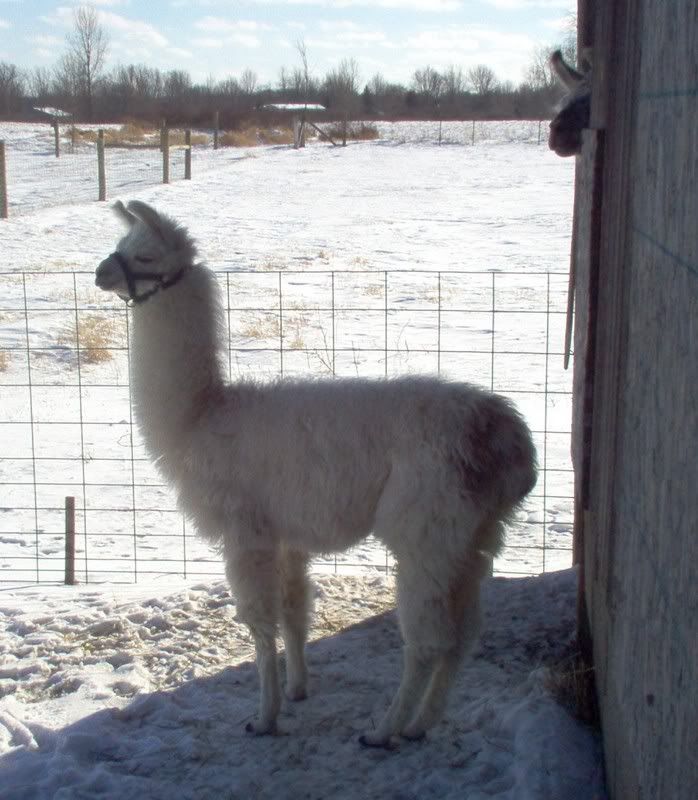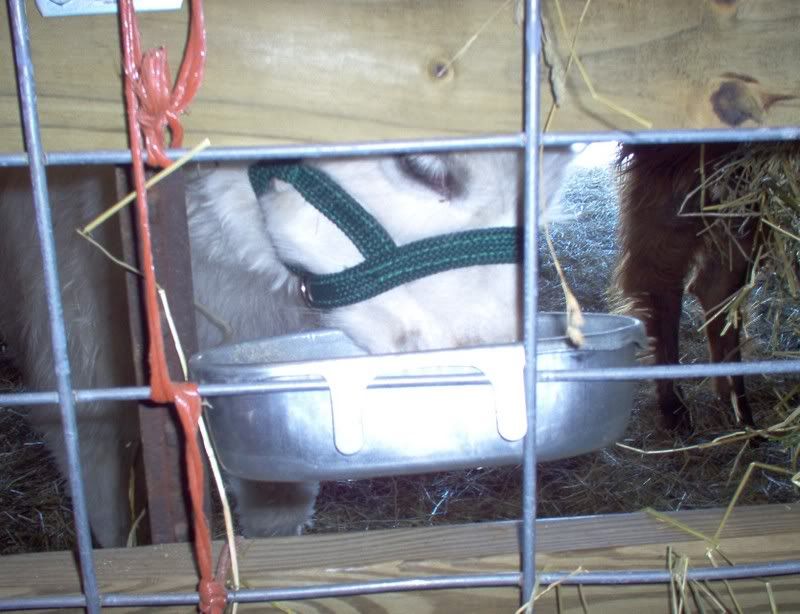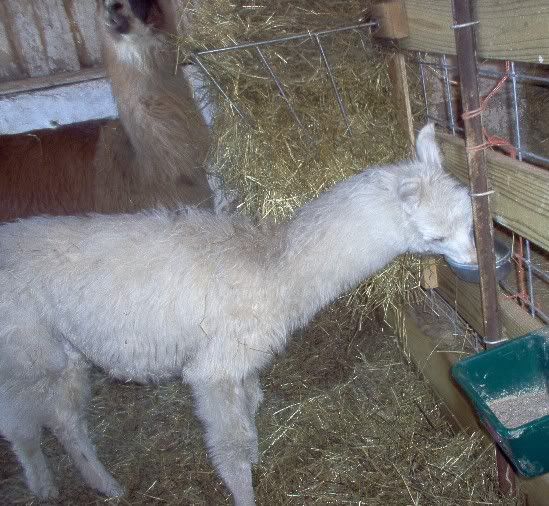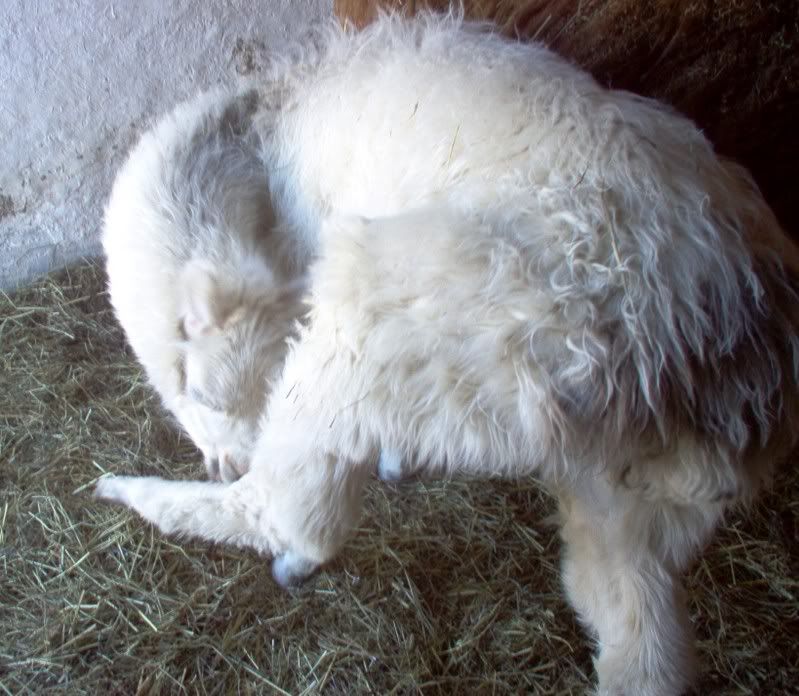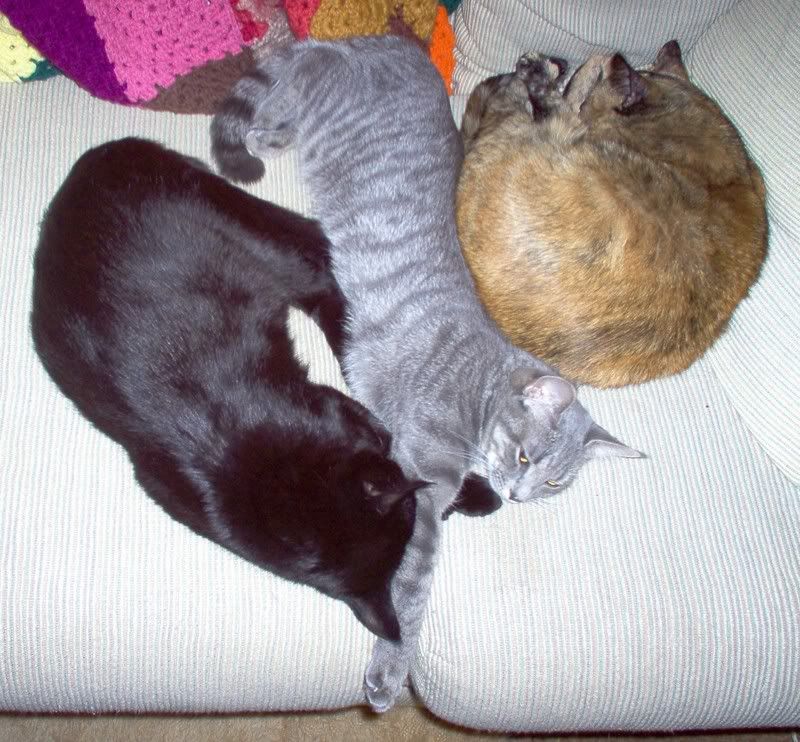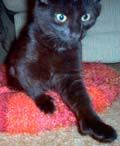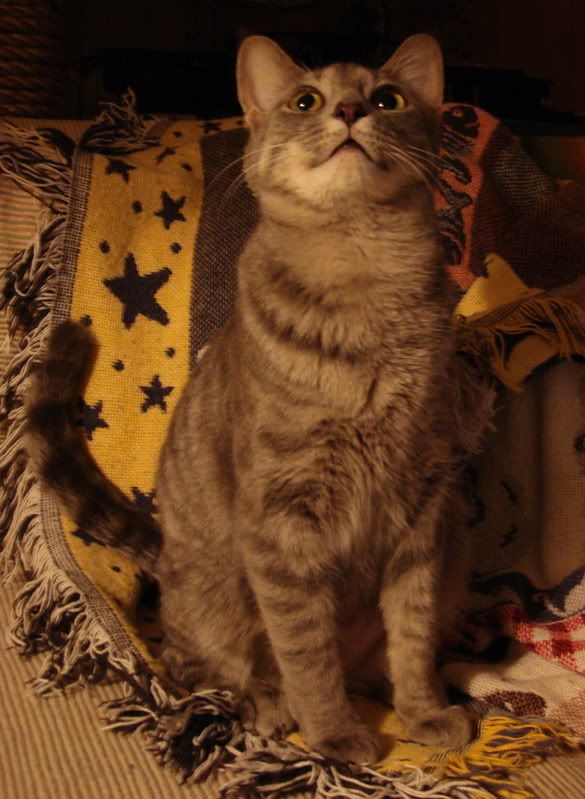
 P-spectrum Utility Re-vibratory Response
P-spectrum Utility Re-vibratory Response 
We now examine in detail a very interesting aspect of the Feline Unit: the P-spectrum Utility Re-vibratory Response (PURR).
You may have noticed that your Feline Unit seems to have the uncanny ability to land on its feet and generally sustains very few injuries. This has recently been attributed, in part, to the healing properties of the PURR. What I will here call the “P-spectrum” comprises reverberating pulses generated in the throat region of the Feline Unit at a frequency of, optimally, 20-140 hertz (Hz).

P-spectrum vibrations at these frequencies have been found uniquely therapeutic for healing, pain relief, muscle growth and repair, and joint mobility.
We have all surely noticed our Feline Units employing the PURR during pleasurable activities, but the PURR is also activated under stress, while giving birth to new units [although it is strongly suggested that this option be deactivated, since their reproductive capabilities are quite astounding], and during pain and healing.
 PURR may or may not be accompanied by the kneading trance.
PURR may or may not be accompanied by the kneading trance. Pumas, like our domestic feline units, also purr.
Pumas, like our domestic feline units, also purr.Following are excerpts from a few studies of the PURR which owners and aficionados of Feline Units may find interesting if they desire additional information on the subject.
~~~~~~~~~~~~~~~~~~~~~~~~~~
“Scientists have demonstrated that cats produce the purr through intermittent signaling of the laryngeal and diaphragmatic muscles. Cats purr during both inhalation and exhalation with a consistent pattern and frequency between 25 and 150 Hertz. Various investigators have shown that sound frequencies in this range can improve bone density and promote healing.”
Scientific American (January 27, 2003)
 Cheetahs also purr.
Cheetahs also purr.~~~~~~~~~~~~~~~~~~~~~~~~~~
 So do ocelots...
So do ocelots...“Cats do not have near the prevalence of orthopedic disease or ligament and muscle traumas as dogs have, and non-union of fractures in cats is rare. Researchers believe that self-healing is the survival mechanism behind the purr. There is extensive documentation that suggests that low frequencies, at low intensity, are therapeutic. These frequencies can aid bone growth, fracture healing, pain relief, tendon and muscle strength and repair, joint mobility, the reduction of swelling, and the relief of dyspnea, or breathlessness.
“Results indicated that despite size and different genetics, all of the individual cats [in the study, which included the cheetah, puma, serval, ocelot and the domestic cat] have strong purr frequencies that fall within the range of a multitude of therapeutic frequencies and particular decibel levels, see Fig. 3. Frequencies of 25 and 50 Hz are the best, and 100 Hz and 200 Hz the second best frequencies for promoting bone strength. Exposure to these signals elevates bone strength by approximately 30%, and increases the speed at which the fractures heal.”
Solving The Cat's Purr Mystery using Accelerometers, Elizabeth von Muggenthaler and Bill Wright, Brüel & Kjær, 2003
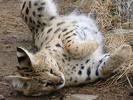 ...and servals.
...and servals.~~~~~~~~~~~~~~~~~~~~~~~~~~
 Serval kittens...
Serval kittens...[Don’t let the kooky look of
this site put you off—this is the most comprehensive summary of the subject I found, and it’s excellent.]
“There is another clue found in a study performed by Dr. T. F. Cook, (1973) The relief of dyspnoea in cats by purring, New Zealand Veterinary Journal. A dying cat who could not breathe (they were considering euthanasia), was found to breath normally once it began purring. The purring opened up the cat's airway, and improvement was "remarkable and the next day commenced to eat...." Three species of cats have a strong harmonic at exactly 100 Hz, the vibrational frequency found to relieve dyspnea. One species within 2 Hz and one species within 7 Hz of 100 Hz. It could be that the cat's purr decreases the breathlessness by vibratory stimulation.
“Is it possible that evolution has provided the felines of this world with a natural healing mechanism for bones and other organs? Researchers at Fauna Communications believe so.
“Being able to produce frequencies that have been proven to improve healing time, strength and mobility could explain the purr's natural selection. In the wild when food is plentiful, the felids are relatively sedentary. They will spend a large portion of the day and night lounging in trees or on the ground. Consistent exercise is one of the greatest contributors to bone, (Karlsson et al, 2001), and muscle (Roth et al, 2000; Tracy et al 1999), and tendon and ligament strength (Simoson et al, 1995; Tipton et al 1975). If a cat’s exercise is sporadic it would be advantageous for them to stimulate bone growth while at rest. As well, following injury, immediate exercise can rebreak one and re-tear healing muscle and tendon (Montgomery, 1989). Inactivity decreases the strength of muscles (Tipton et al, 1975). Therefore, having an internal vibrational therapeutic system to stimulate healing would be advantageous, and would also reduce edema and provide a measure of pain relief during the healing process.”
The Felid Purr: A bio-mechanical healing mechanism, Fauna Communications Research Institute
~~~~~~~~~~~~~~~~~~~~~~~~~~
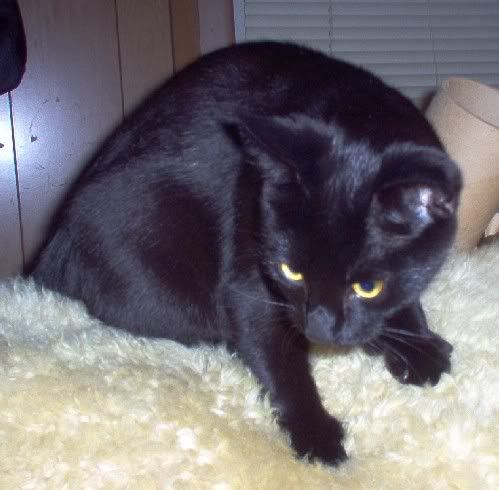 ...and obsidian kittens.Free cat sounds
...and obsidian kittens.Free cat sounds, including purrs, for your listening pleasure.
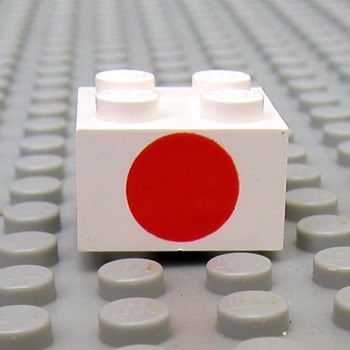 Obsidian Kitten is currently experiencing technical difficulties due to the monthly interruption of normal circadian rhythms. We apologize for any inconvenience, and assure you that Cats on Tuesday will return next week, same time, same station.
Obsidian Kitten is currently experiencing technical difficulties due to the monthly interruption of normal circadian rhythms. We apologize for any inconvenience, and assure you that Cats on Tuesday will return next week, same time, same station.